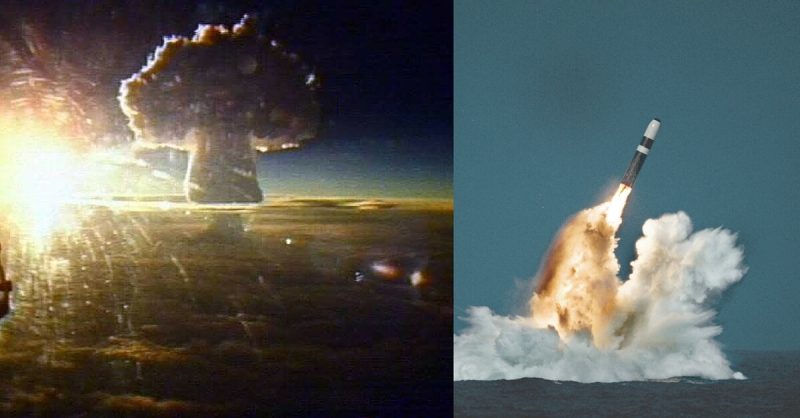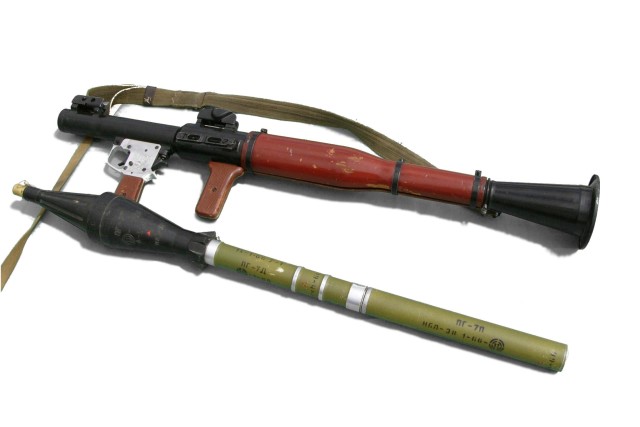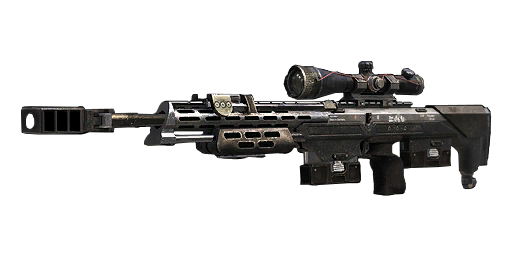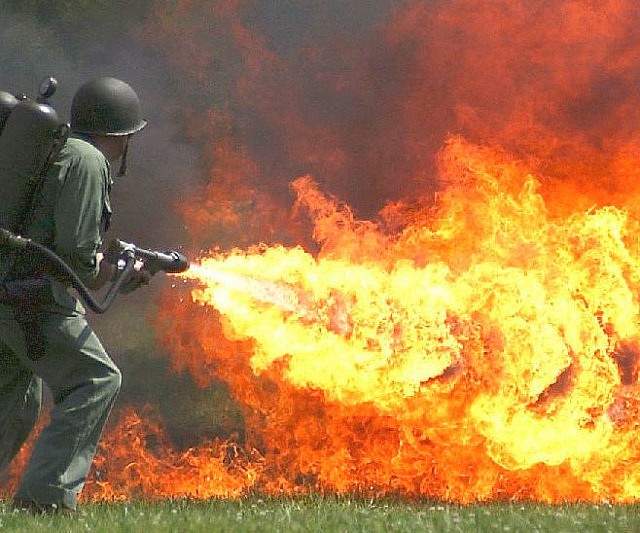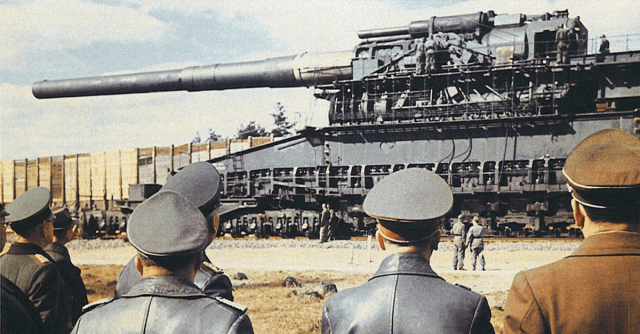Let us take a look at ten of the world’s most dangerous and deadly weapons that have been created by mankind. It will not surprise you that all of these weapons are 20th-century inventions though of some the ancestry can be traced back thousands of years.
We will start off with three weapons that can be used by a single soldier before moving over the big stuff.
10. RPG – Rocket Propelled Grenade
With the RPG you can fire anti-tank rockets from the shoulder. Based on the Nazi Germany’s Panzerfaust it was developed into feared anti-tank weapon. A soldier with limited training and a cheap and simple rocket-propelled grenade can destroy a multi-million dollar tank.
It was widely used against the Americans in the Vietnam War by the Viet Cong and the People’s Army. When the Soviet Army invaded Afganistan, they faced the Mujahideen who quickly became very adept in the use of it against tanks and military vehicles.
In the middle of the 1950s, the American army developed their version of the RPG, which became known as the LAW, lightweight antitank weapon.
RPG’s remain the menace of armored vehicles and tanks since their inception.
9. DSR-50 The .50 cal Sniper Rifle
The DSR-50 is bolt-action sniper rifle chambered to fire the massive .50 cal BMG round. It is based on the DSR-1, a specialized sniper rifle for police sharpshooters. The DSR-50 has an integrated hydraulic recoil damping system in the buttstock and an integral muzzle brake which reduces the perceived muzzle blast.
Designed to punch holes in (lightly) armored military vehicles, we’ll leave what happens when you shoot a person to your imagination.
8. Flamethrower
What is a flamethrower? A flamethrower is classed as an incendiary device, that is specifically designed to project fire in a stream that is long and controllable.
Flamethrowers were used first by ancient Greeks, as far back as the 1st Century AD. In more modern times flamethrowers were utilized throughout the First World War, by the Germans, and more commonly used in the Second World War.
Not all flamethrowers are the same; some are designed to project a stream of fire that is caused by flammable liquid that has been ignited. Others are designed to project a long flame of gas. Liquids are the most common type used in military flamethrowers. Commercial devices opt to use propane and natural gasses; high-pressure ones, as they are generally considered safer to use.
Military uses for flamethrowers were mainly centered around attacking fortifications, bunkers, etc. Civilian uses for flamethrowers tend to be more agricultural in nature; they are useful for clearing fields, for example.
Flamethrowers come in many forms; portable ones tend to be two-part devices (a backpack for the fuel and a tube for the output), they can also be vehicle mounted for easy use.
Simple to operate and maintain, you certainly do not want to be on the receiving end of them, making them number 8 on our list.
7. Schwerer Gustav
Schwerer Gustav – This was the name given to a German 80 cm railway gun, a huge piece of artillery designed to be shot from a railway wagon. It was developed in the late 1930s by Krupp of Essen as artillery for the explicit purpose of destroying the main forts of the French Maginot Line during a siege. At the time, these were the strongest fortifications in existence.
‘Gustav’ could fire shells weighing seven tons to a distance 47 kilometers. When fully assembled the ‘Schwerer Gustav’ weighed nearly 1,350 tons. The Germans designed this piece of artillery to prepare for the Battle of France. The biggest gun of WW II was not ready to do battle when the battle began. But it didn’t really matter because the Wehrmacht’s Blitzkrieg aggression through Belgium rapidly outflanked and isolated the Maginot Line’s static defenses, forcing them to surrender without any major losses and making the destruction of the fortifications unwarranted.
‘Schwerer Gustav’ was deployed later during the war to the Soviet Union. During the artillery bombardment of Sevastopol, which was part of Operation Barbarossa, among other things, the large gun destroyed an ammunition warehouse buried in layers of rock under a bay.
Leningrad was the next stop for the 80 cm gun and probably was planned to be used in the Warsaw Uprising like other German heavy artillery weapons, but the rebellion was crushed before the heavy artillery was needed. The Germans demolished ‘Schwerer Gustav’in 1945, near the very end of WWII, so it wouldn’t be confiscated by the Soviet Army.
It was the largest-caliber artillery weapon ever used in combat; the heaviest mobile artillery weapon ever built, considering the total weight, and fired the heaviest shells of any artillery gun.
There are only two weapons that have larger caliber weaponry – the British Mallet’s Mortar and the American Little David mortar (both 90 cm).
6. Nimitz Class Aircraft Carrier
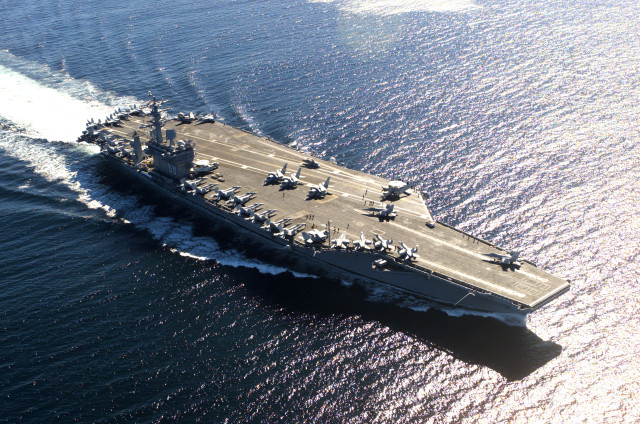
US Nimitz Class – at over 1000 feet, the Nimitz Class aircraft carriers are the world’s biggest warships. Costing around US$4.5 billion each, they are also the most expensive. The 100,000-tonne carriers can hold up to 90 aircraft and are fitted with anti-aircraft guns and missiles.
They are expected to serve for 50 years. However, the US is already developing its successor in the Gerald R. Ford Class, which will be even bigger and is expected to cost around US$12 billion.
Currently, there are ten Nimitz Class aircraft carriers in service with the United States Navy. The lead ship of the class is named after the World War II United States Pacific Fleet commander Fleet Admiral Chester W. Nimitz, the U.S. Navy’s last fleet admiral.
Instead of the gas turbines or diesel-electric systems which are used for propulsion on most modern warships, the carriers use two nuclear reactors which drive the four propeller shafts and can achieve a maximum speed of over 30 knots. Because they use nuclear power, these massive ships can operate for over 20 years without refueling!
The ability to project power anywhere on the planet with the ability to defend itself means a high place on our list.
5. Chimera Virus
In ancient Mythology a chimera is an animal formed from parts of different animals, like a hippogriff or a griffin, which aptly describes this virus.
A Chimera Virus is made by combining the DNA of two or more other viruses.
In the 1980’s the Soviets were experimenting with them, using the genetic material from other viruses and injecting them into a smallpox (or another) virus thus producing a chimera. This process ensures the new virus is able to retain the smallpox’s virulence and appearance under a microscope while at the same time it is able to spread an entirely different infection.
This genetic engineering breakthrough allows viral agents to evade known treatments and vaccines, making them all the more deadly.
4. Russia’s Aviation Thermobaric Bomb of Increased Power
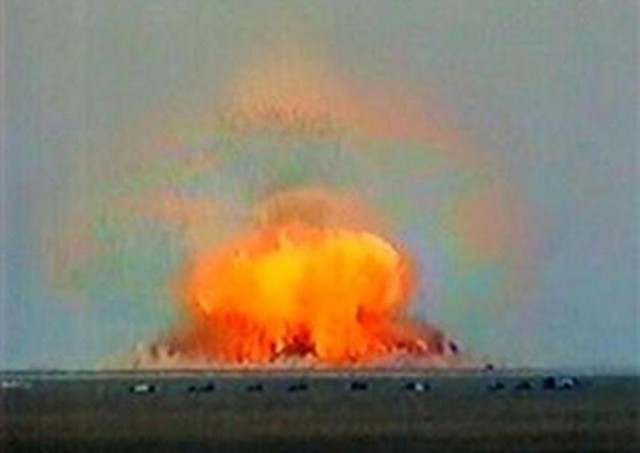
“All that is alive merely evaporates,” is the quote Russian Deputy Chief of Russian General Staff Alexander Rukshin shared when asked about their newly developed bomb.
In 2007 the Russians successfully tested and released their “Aviation Thermobaric Bomb of Increased Power”, quickly nicknamed the “Father of All Bombs” (FOAB).
The FOAB is reportedly 4 x more powerful than the US military’s biggest non-nuclear bomb, the GBU-43/B Massive Ordnance Air Bomb which is officially designated with the acronym “MOAB” and known popularly as the “Mother of All Bombs.”
This makes the Russian device officially the most powerful conventional non-nuclear weapon in the world.
The FOAB replaces several smaller nuclear bombs in the Russian arsenal. It yields an equivalent of 44 tons of TNT while just using only seven tons of a new high explosive.
Its blast and pressure wave has a similar effect to a small nuclear weapon, just on a smaller scale. The bomb detonates in mid-air causing a supersonic shockwave and extreme temperatures.
Thermobaric weapons generate longer, more sustained blast waves with higher temperatures as compared to conventional explosives. Because of this, they produce more damage over larger areas than conventional weapons of similar mass.
They also differ in that they use oxygen from the atmosphere itself rather than relying on an oxidizing agent in their explosives. They produce more energy than normal happens and as a result are more difficult to control.
3. ICBM
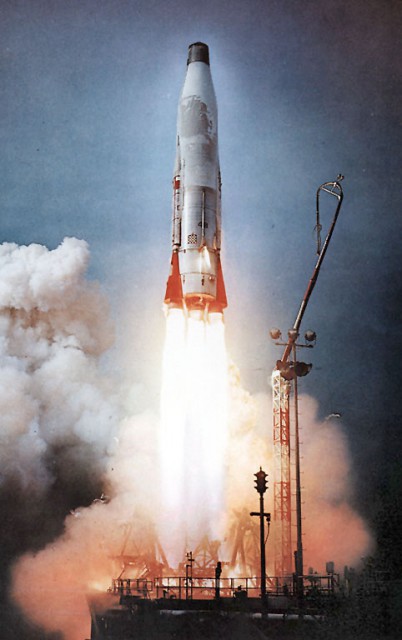
The Intercontinental Ballistic Missile (ICBM) is a ballistic missile that is guided to the target. It can travel at least 3,400 miles and was built primarily for transporting nuclear weapons.
ICBMs have the capability of being launched from airplanes, submarines, missile silos, and vehicles. They became an integral part of the MAD doctrine because these weapons allowed the flexibility that enabled the country to strike back and destroy the enemy. It basically guaranteed a second strike on the enemy.
With the advancing of technology, it came to fruition that an ICBM could be used to launch several nuclear warheads at once because of the MIRV.
2. MIRV
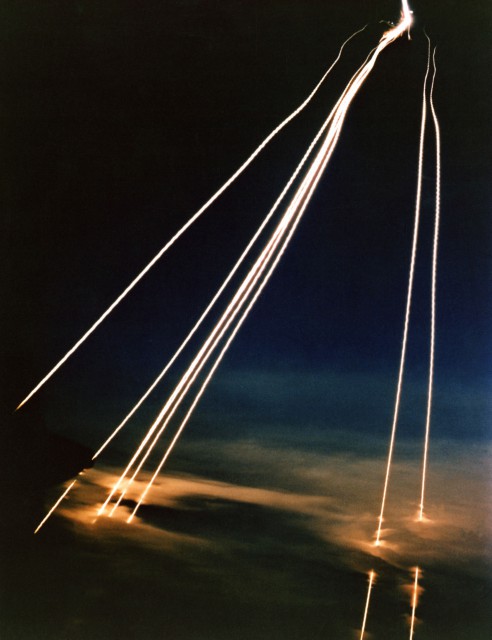
The MIRV, which is a Multiple Independently Targetable Re-entry Vehicle, is a payload for ballistic missiles that contains multiple warheads.
Each warhead has the capability of being aimed to hit one of many targets. The old fashioned warheads could only transport a single nuclear bomb on a single missile and aim for a single target.
The next step was the multiple reentry vehicle (MRV) missile that could carry numerous warheads that were all dispersed but not individually aimed which resulted in a blast similar to a shotgun.
The MIRV solved that problem, all warheads were now targetable.
1. Tsar Bomba
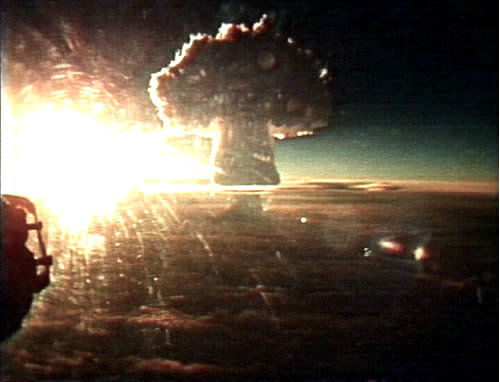
Every aspect of the phrase, ‘weapons of mass destruction,’ applies to the Tsar Bomba. The weapon was the Soviet Union’s rebuttal to the United States nuclear program. A massive device, designed to decimate everything, that’s what the bomb was. Only one was ever detonated, and that was enough.
Tsar Bomba remains the most powerful device ever detonated by mankind. To compare, the most powerful device the United States ever created was the B41. It was also the only three-stage nuclear device the U.S. created. The B41 had a maximum yield of 25 megatons TNT, while the Tsar Bomba had a maximum yield of 100 megatons of TNT.
Of course, the most powerful nuclear bomb ever detonated had a massive mushroom cloud. The mushroom cloud is estimated to have gone as high as 40 miles in the sky, which is about seven times as tall as Mount Everest. At this height, the cloud went through the stratosphere as well as the mesosphere.
The bomb also unleashed a massive fireball to accompany the mushroom cloud. Once detonated, the fireball nearly reached the height at which the bomb was dropped and was visible more than 600 miles away from the site.
The bomb was essentially built to flex the Soviet Union’s military strength. Because of this, the bomb was so huge that it was basically too huge. What does this mean? It means that it wasn’t practical for wartime use. For one, moving the bomb around was simply too complicated. It didn’t even really fit on the jet that dropped it from the sky; that plane had to be heavily modified for the bomb. Second, the crew on the plane only had a 50% chance at survival. All of this comes even after the bomb was scaled down from its original 100 megaton size.
